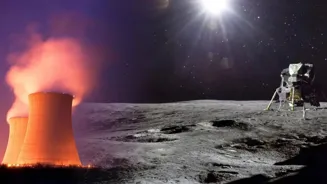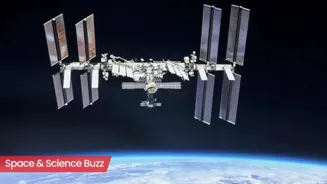Transportation Secretary Sean Duffy is preparing to announce an ambitious NASA directive to build a nuclear reactor on the Moon by 2030. The move, based
on internal documents accessed by POLITICO, would place the United States in direct competition with China and Russia, who are jointly developing a lunar base. The order also establishes a 60-day timeline for soliciting industry input and appointing a NASA official to lead the effort. NASA had previously funded a 40-kilowatt nuclear reactor for lunar use, but this new directive demands a 100-kilowatt model. The goal is to have the system ready for launch by the start of the next decade. Senior NASA officials say the technology will be vital for powering habitats and infrastructure on the Moon's surface.
Duffy’s First Major NASA Act Aims at Strategic Moon Edge
President Donald Trump appointed Duffy to the NASA interim role after withdrawing the nomination of billionaire Jared Isaacman. The shift comes amid internal NASA tensions and congressional concern about Duffy juggling two high-level government posts. Nevertheless, the directive signals Duffy’s desire to shape space policy and reorient NASA toward hard-power space capabilities.
“It is about winning the second space race,” said a NASA official involved in the planning process, requesting anonymity due to the document’s embargo. The initiative appears to resonate with the White House’s proposal to raise crewed spaceflight funding, despite pushing deep cuts to scientific programmes.
US Space Ambitions Also Target ISS Replacement
Alongside the reactor announcement, Duffy issued a separate directive aimed at accelerating the replacement of the ageing International Space Station. NASA will now award contracts to at least two private firms within six months, with the goal of launching a commercially run space station by 2030. The agency’s shift in procurement policy is meant to counter China’s own permanently crewed station already in orbit.
Firms like Axiom Space, Vast, and Blue Origin have been leading contenders, but lawmakers have criticised NASA’s pace and funding delays. The directives could help synchronise NASA timelines with broader US national space strategy, especially amid Pentagon backtracking on nuclear propulsion programmes.


















